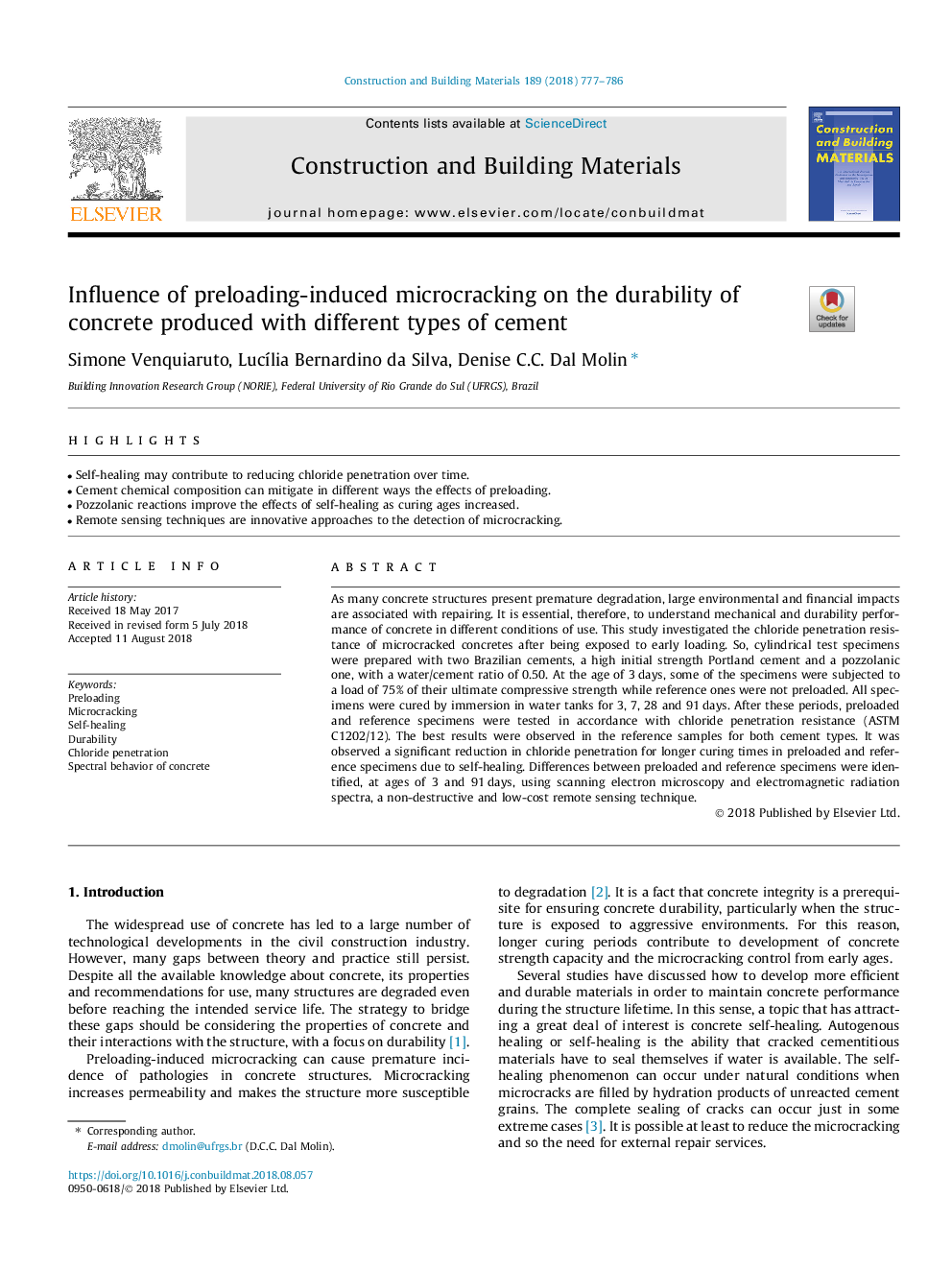| Article ID | Journal | Published Year | Pages | File Type |
|---|---|---|---|---|
| 10145747 | Construction and Building Materials | 2018 | 10 Pages |
Abstract
As many concrete structures present premature degradation, large environmental and financial impacts are associated with repairing. It is essential, therefore, to understand mechanical and durability performance of concrete in different conditions of use. This study investigated the chloride penetration resistance of microcracked concretes after being exposed to early loading. So, cylindrical test specimens were prepared with two Brazilian cements, a high initial strength Portland cement and a pozzolanic one, with a water/cement ratio of 0.50. At the age of 3â¯days, some of the specimens were subjected to a load of 75% of their ultimate compressive strength while reference ones were not preloaded. All specimens were cured by immersion in water tanks for 3, 7, 28 and 91â¯days. After these periods, preloaded and reference specimens were tested in accordance with chloride penetration resistance (ASTM C1202/12). The best results were observed in the reference samples for both cement types. It was observed a significant reduction in chloride penetration for longer curing times in preloaded and reference specimens due to self-healing. Differences between preloaded and reference specimens were identified, at ages of 3 and 91â¯days, using scanning electron microscopy and electromagnetic radiation spectra, a non-destructive and low-cost remote sensing technique.
Related Topics
Physical Sciences and Engineering
Engineering
Civil and Structural Engineering
Authors
Simone Venquiaruto, LucÃlia Bernardino da Silva, Denise C.C. Dal Molin,
